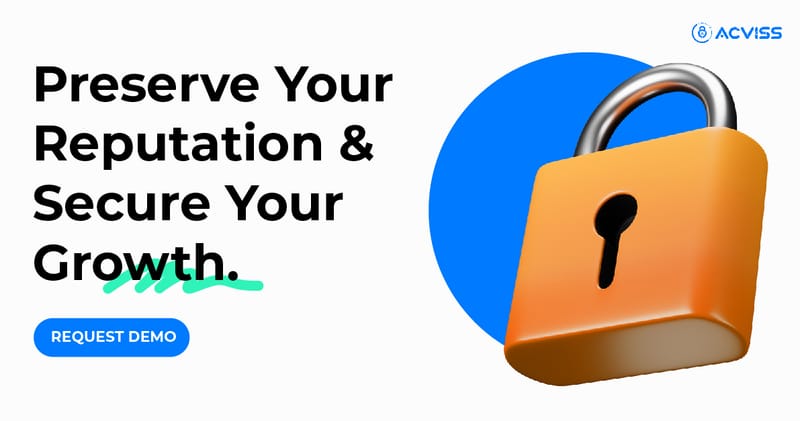What is Copyright and Why Your Brand Should Enforce It
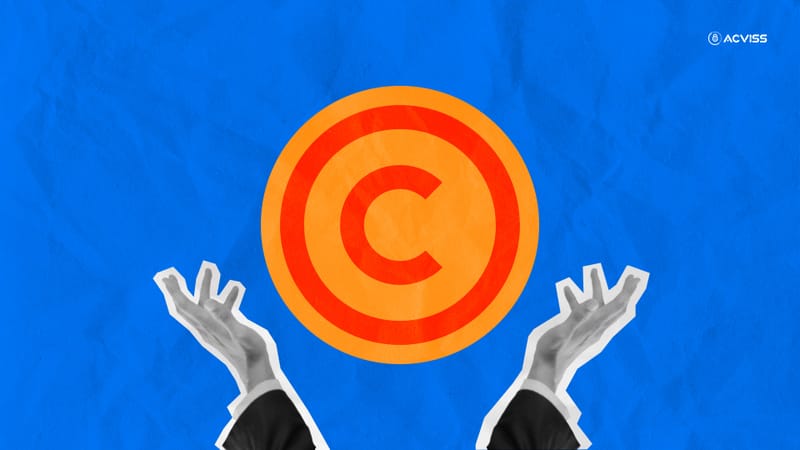
The value of intellectual property is impossible to overestimate in the fast-changing digital scene of today. Among the many kinds of intellectual property, copyright is most important in safeguarding the artistic creations defining the character of a brand. Copyright protects everything against illegal use, including original material, a phrase, and a logo. This blog will explore the nuances of copyright, its importance for companies, and why brand protection depends on strict enforcement of this right.
What is Copyright?
A legal framework known as copyright gives artists exclusive authority over their creative creations. This protection covers a great range of artistic expressions, including literature, music, art, software, and even company logos and slogans. The U.S. Copyright Office claims that although registering the copyright offers further legal advantages, copyright protection is automatic upon the production of a work.
Types of Works Protected by Copyright
Copyright addresses a wide spectrum of creations. Regarding brands, this covers:
- Logos: The graphic depiction of a brand meant to set it apart from rivals.
- Slogans are catchphrases that distinguish the core of a brand.
- Marketing materials include brochures, ads, and online content highlighting goods or services.
- Software: Every proprietary program the brand created.
Duration of Copyright Protection
Usually, copyright protection spans the life of the author plus another seventy years. For corporate authorship, it lasts whichever is shorter—95 years from publishing or 120 years from conception. Brands that want constant protection of their intellectual property must first understand these lengths.
The Importance of Copyright for Brands
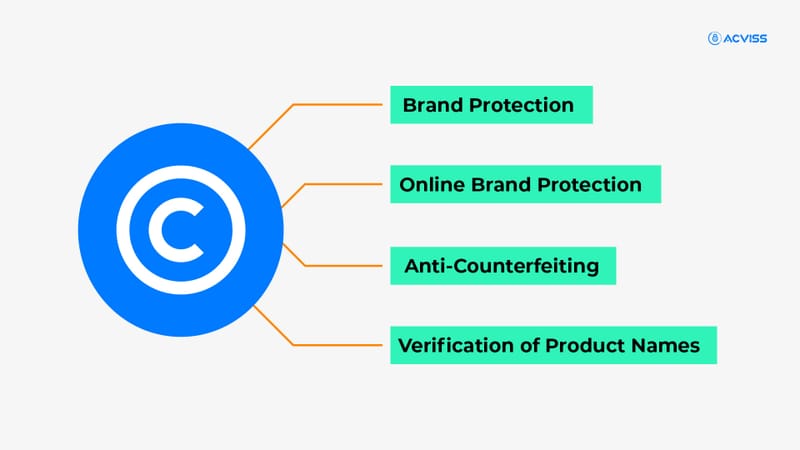
Brand Protection
The protection of a brand depends fundamentally on copyright. It guarantees that nobody else may use your creative works without authorization, therefore preserving the integrity of your brand identification. Customer recognition and loyalty depend on a strong brand identity, hence copyright helps to avoid weakening of that identity.
Online Brand Protection
Online brand protection is more important in the digital era than it was years before. Unauthorized persons may easily copy and distribute copyrighted works because of the internet. Using copyright enforcement, companies may combat online piracy and illegal use of their material, therefore safeguarding their brand to maintain its uniqueness in the congested online market.
Anti-Counterfeiting
For many companies, especially in sectors like fashion, electronics, and medicines, counterfeiting is a major problem. A key weapon in anti-counterfeiting initiatives is copyright. Clear ownership of intellectual components helps businesses to more quickly spot counterfeit goods and act legally against infringers. This not only preserves the income of the brand but also shields customers from possibly dangerous counterfeit products.
Verification of Product Names
Product authentication also involves copyright to some extent. Customers must be able to distinguish real goods from knockoffs. Enforcing copyright helps firms make sure their trademarks and marketing materials are utilized only on original goods. Long-term brand loyalty depends on customers' developing confidence and trust, which this helps to create.
The Risks of Not Enforcing Copyright
Ignoring copyright may have terrible effects on brands. Ignoring copyright protection has some of the following hazards:
1. Loss of Revenue
Unauthorized usage of copyrighted content may result in major financial loss. Using creative works from your brand by rivals or counterfeiters might cause sales to be diverted from your approved items. This affects income as well as your market share.
2. Reputation Damage for Brands
Unauthorized users of your brand's creative components run the risk of confusing consumers and compromising its image. If a low-quality counterfeit product with your trademark is offered, for example, it might damage your brand and erode customer confidence.
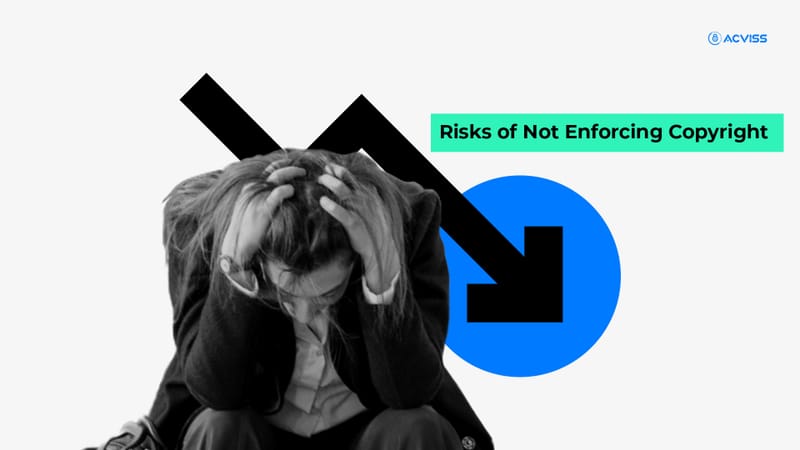
3. Legal Complications
Ignoring copyright enforcement could cause legal trouble. Should you neglect to defend your intellectual property, you might unintentionally give others permission to utilize it. Resolving ownership and use rights conflicts resulting from this may be very expensive and time-consuming.
Case studies
The absence of copyright enforcement has caused several brands to suffer. For instance, a well-known fashion company suffered major losses when fake goods exploded into the market. The brand's image suffered and revenues fell as it neglected to move aggressively to defend its copyright. Such cases highlight how crucial careful copyright protection is.
Steps to Enforce Copyright
Enforcing your copyright early on will help you to defend your brand properly. These are some doable tactics:
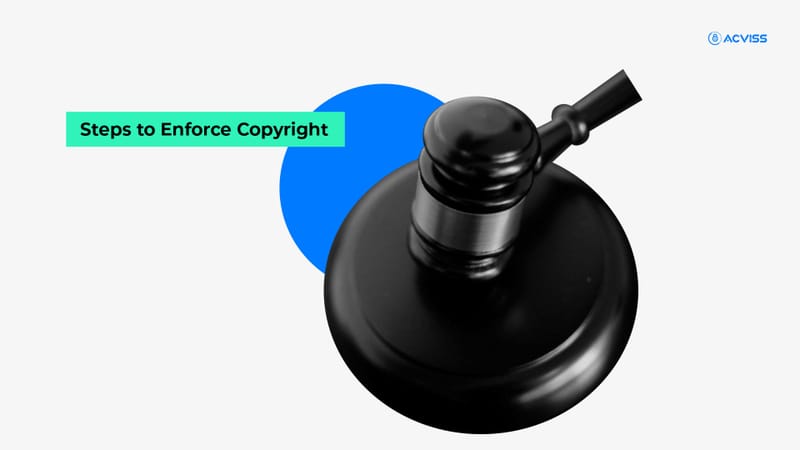
1. Register Your Copyrights
Although copyright protection is automatic, registering your copyrights with the relevant government body (like the U.S. Copyright Office) offers further legal benefits. Registration is a requirement for suing for infringement and creates a public record of your copyright. In the event of infringement, you can also seek statutory damages and attorney's costs.
2. Monitor for Infringement
It is very important to routinely check the internet and physical markets for illegal exploitation of your intellectual works. Track possible infringements using web tools and services designed specifically for brand protection. It is a team effort as employees may also help to find illegal usage.
3. Send Cease and Desist Letters
Sending a stop and desist letter to the infringing party comes first should you find an infringement. This letter should demand that they cease exploiting your content and succinctly list your copyright ownership. Usually, without further legal action, a well-written stop-and-desist letter will help to address the problem.
4. Legal Action
Should the infringement ignore your stop and desist letter, you could have to go after legal action. Seeking a copyright infringement case may be a difficult and expensive procedure. Hence, it is advisable to see a seasoned intellectual property attorney. They can lead you through court cases and assist you with proper trademark protection.
Detecting and Preventing Copyright Infringement: Essential Tools for Brands
In today's digital world, protecting your brand's intellectual property is essential. Various tools can help track copyright violations successfully. Below are some of the best tools available:
- Copyscape
Copyscape is a top tool for identifying copying and copyright theft online. It allows you to check the originality of your content by scanning the web for copies. The paid version gives group searches, PDF and Word file uploads, and automatic tracking through Copysentry, which tells you when copies of your content are found.
- Google Alerts
Google Alerts is a free tool that helps watch the web for new mentions of particular keywords or sentences related to your brand. You can set warnings for your brand name, product names, or themes, allowing you to find and solve possible infringements quickly.
- TinEye
TinEye is a backward image search tool that helps you find illegal use of your pictures online. By sharing a photo or giving a URL, you can watch where your visuals are being used, ensuring your brand's visual assets are protected.
- DMCA.com
DMCA.com offers complete copyright protection services, including tracking for infringements and sending takedown letters on your behalf. Their service helps stop potential infringers by offering stickers to show on your website.
- Truviss
Truviss is an online brand protection tool that uses artificial intelligence and machine learning to track online copyright violations. It continuously scans websites, social media, and e-commerce platforms for illegal use of your copyrighted materials. Truviss provides detailed records and automatic takedown capabilities, making it an efficient option for brands looking to protect their intellectual property at scale. By adding Truviss to your copyright protection plan, you can improve your ability to identify and address theft effectively.
Must Read: 5 Steps to Choose the Best Anti-Counterfeit Technology for Your Brand
Best Practices for Copyright Management

Using the following recommended practices will help to guarantee efficient copyright management:
- Educate Employees
Make sure your staff members see the value of intellectual property protection for your business and know the actions they should take to guard it. This covers avoiding using unapproved materials for marketing and advertising campaigns.
- Frequent Update Copyright Registrations
Maintain current copies of your copyright registrations. This covers registering new works when they are generated and renewing registrations as required. In this sense, being proactive will assist to preserve the brand protection.
- Work with Legal Professionals
Dealing with intellectual property-specific legal professionals may provide great assistance. They will guide you through the complexity of copyright law to provide sufficient protection for your brand.
Conclusion
In essence, brand management in the competitive environment of today depends critically on copyright protection. Understanding copyright and acting early to enforce it can help businesses preserve their intellectual property, keep their identity, and fight piracy and counterfeiting.
Ensuring that your brand stays strong, consistent, and lucrative requires giving copyright enforcement top priority in your whole brand protection plan. Invest in protection, be alert against infringement, and teach your staff the value of intellectual property. This will help you not only safeguard your brand but also encourage in your sector a respect for innovation and originality.
